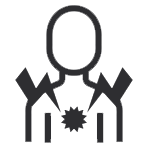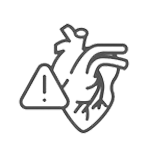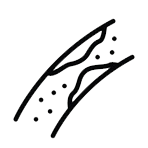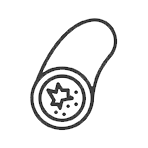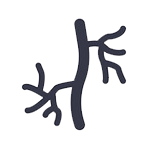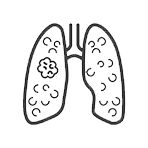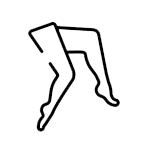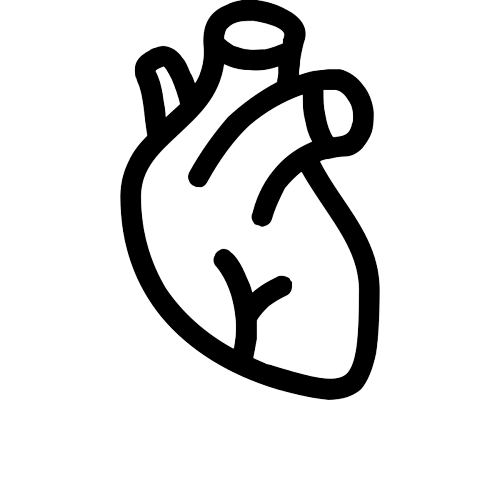Venous insufficiency
Varicose vein is the most prevalent venous disorder. Besides being unattractive, these swollen veins in the legs can also be uncomfortable. They do not have to be a source of humiliation and pain.
Q & A
Varicose veins are due to venous insufficiency
The most common venous disease is varicose veins. These are superficial veins that swell and twist over time. They can form anywhere on the body, but the legs and feet are the most prominent sites. Standing and walking raise the pressure within your veins, putting them at greater risk of injury. Varicose veins emerge when veins are weak or damaged. Just beneath the surface of your skin, varicose veins commonly occur as bluish-purple veins that are enlarged or bulging. They can be humiliating and unpleasant for many individuals. In rare circumstances, varicose veins can cause discomfort, bleeding, and progress to more severe conditions.
Which risk factors are present?
Up to 33 percent of women suffer from varicose veins, which is more prevalent in women than in males. Other risk factors consist of:
Age
Family history
Obesity
Obesity Sedentary lifestyle
Varicose veins are more prevalent in older individuals and those with a family history of the disorder. Your weight and amount of physical exercise can have an impact. Those with obesity or sedentary lifestyles are at a greater risk. And for women, those with multiple pregnanceis are at higher risk.
Which symptoms are present?
Under the skin’s surface, varicose veins may appear twisting or distended. Usually seen on the legs or feet, they may be violet or blue in hue. Similarly, some individuals suffer uncomfortable sensations. You may experience any of the following:
Aching
Throbbing
Swelling
Itching
Skin discoloration
Varicose veins can make your lower legs feel heavy and generate a burning or throbbing sensation. You may see that the discomfort worsens after considerable periods of standing or sitting.
Complications
Although uncommon, complications of varicose veins might include:
Ulcers. Ulcers can develop on the skin surrounding varicose veins, especially around the ankles. Typically, a darkened area on the skin precedes the formation of an ulcer. Consult your doctor promptly if you suspect you have acquired a leg ulcer.
Blood can clot. Sometimes, the veins deep within the legs may expand, causing leg discomfort and edema. Persistent leg discomfort or swelling is indicative of a blood clot, so seek medical assistance if it persists.
Bleeding. Occasionally, veins close to the skin rupture. Although this often produces very minimal bleeding, medical attention is required.
How are varicose veins dealt with?
Changing one’s lifestyle might provide pain alleviation for some. Regular exercise can help alleviate pain by promoting a healthy blood supply. Elevating the legs after long periods of standing or using compression stockings prevents the discomfort from worsening. Other lifestyle modifications include:
1. Control weight. Getting rid of extra weight relieves strain on the veins.
2. Avoid salt. Follow a low-salt diet to minimize water retention-related edema.
3. Select appropriate footwear. Avoid high heels. Low-heeled footwear engages the calf muscles more, which is healthier for the veins.
4. Avoid wearing restrictive garments. Avoid wearing tight clothing around the waist, legs, and groin, since these items might restrict blood flow.
5. Elevate the legs. Take many brief pauses each day to lift your legs above the level of your heart to increase blood circulation in your legs.
6. Avoid prolonged sitting and standing. Change your posture periodically to improve circulation.
Tests and treatment
A health care practitioner may prescribe a venous Doppler ultrasonography of the leg to diagnose varicose veins. Doppler ultrasonography is a noninvasive diagnostic that utilizes sound waves to examine blood flow via vein valves. An ultrasound of the leg can reveal a blood clot. Varicose veins may be treated with self-care, compression stockings, and surgeries or procedures. Varicose vein treatments are frequently performed as outpatient procedures, meaning that patients typically return home the same day. Wearing compression stockings all day is frequently the initial measure taken. The compression stockings assist veins and leg muscles in moving blood more efficiently.
Operations and other processes
1. Varicose veins may require further intervention if self-care and compression stockings fail, or if the condition is more severe.
Sclerotherapy. A health care expert injects a solution or foam into the varicose veins to scar and shut them. The repaired varicose veins should diminish within a few weeks.
2. Laser therapy. The laser therapy emits intense bursts of light onto the vein, causing it to gradually vanish. There are no cuts or needles utilized.
3. Using radiofrequency or laser energy in catheter-based treatments. This is the treatment of choice for bigger varicose veins. A healthcare professional inserts a catheter into an enlarged vein and warms its tip using radiofrequency or laser radiation. As the catheter is withdrawn, the heat causes the vein to compress and close, destroying it.
4. High ligature and vein stripping. This surgery includes tying off a vein before it connects to a deeper vein and removing the vein via minor incisions. This is often an outpatient surgery. Blood will continue to flow in the leg even if the vein is removed because veins deeper in the leg carry bigger amounts of blood.
5. Phlebectomy. A healthcare professional eliminates smaller varicose veins by a series of punctures to the skin. In this outpatient operation, just the areas of the leg that are being poked are anesthetized. Usually, scarring is minimal.

